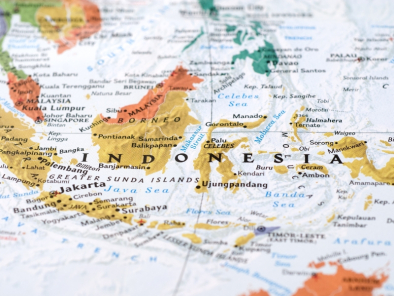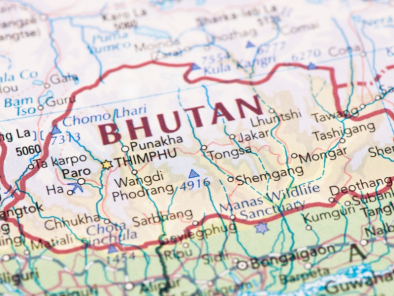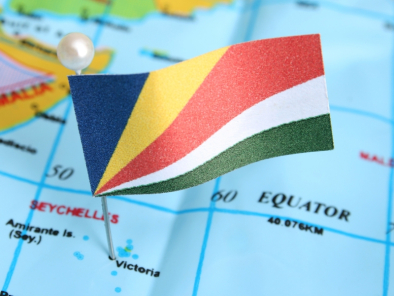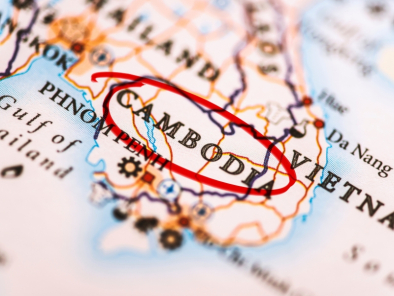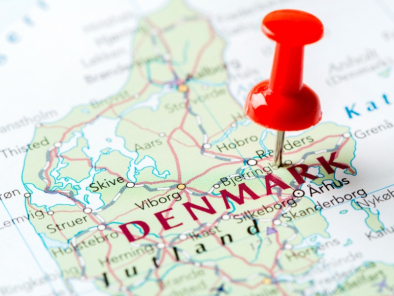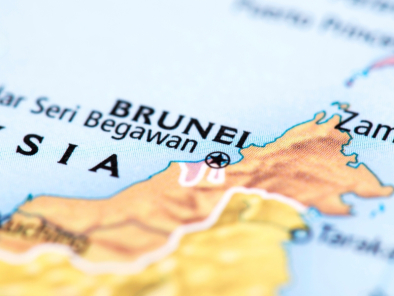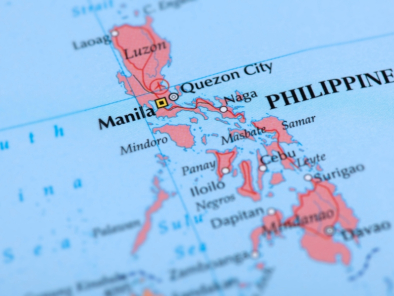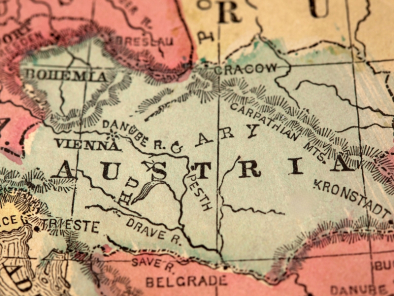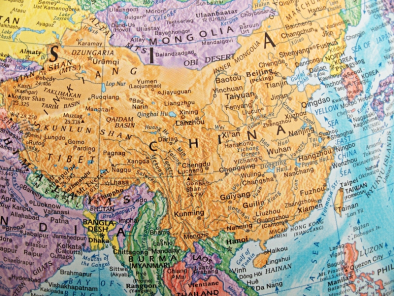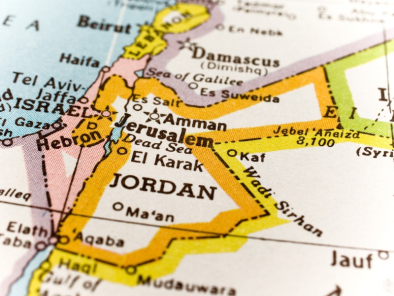
Posted by: Leo Travel Hub
TRAVEL TIPS FOR JORDAN
At the heart of the Middle East, Jordan sits at one of the most important crossroads in the entire world. As such it has long been the subject of fascination for just about every empire that has turned its covetous gaze on this rich and beautiful territory. The Israelites, the Romans, the Byzantines, the Ottomans and the British have all been here in the past.
Visa The visa is to be obtained prior to arrival in the country
Getting there:
By Air:
The national airline is Royal Jordanian Airlines (RJ) There are flights to 50
destinations in the Middle East, Europe, North America, the Far East and Asia.
International
airports:
Queen Alia International (AMM) is 35km (22 miles) southeast of the capital -
Amman, to which it is connected by a good highway (travel time – approximately
40 minutes). There is a regular bus service to Amman every 30 minutes (travel
time – approximately 50 minutes), and taxis are also available. Facilities
include duty free shops, bank/bureau de change, eating and shopping facilities,
and car hire (Avis and Hertz).
Departure tax:
Approx JD 6.00 for individual tourists. Transit passengers are exempt.
By Sea: The only port is Aqaba, which is on the cruise itineraries for Cunard, P&O and Swan Hellenic. Car and passenger ferries from Aqaba to Cairo and Aqaba to Nuweiba operate twice-daily and there is also a high-speed hydrofoil service. There is a weekly passenger service to Suez and Jeddah.
Departure tax: Approx JD 6.00 for individual tourists.
By Rail: The Hijaz Railway operates on the old Ottoman track between Amman and Damascus (Syrian Arab Republic).
Getting around:
Air:
Royal Wings operates regular flights from Amman to Aqaba. It is also possible
to hire executive jets and helicopters.
Road: Main
roads are good (there are nearly 3000km (1900 miles) of paved roads in the
country), but desert tracks should be avoided. It is important to make sure
that the vehicle is in good repair if travelling on minor roads or tracks. Take
plenty of water and follow local advice carefully. In case of breakdown,
contact the Automobile Association. Traffic drives on the right. There are
frequent passport controls along the Red Sea and travellers are advised to have
their papers ready.
Bus:
Services are efficient & cheap. Alpha, JETT & Petra all operate modern,
airconditioned fleets.
Taxi:
Share-taxi service to all towns on fixed routes is also available for private
hire. Share-taxis to Petra should be booked in advance owing to demand.
Car hire: Avis & four national companies operate services in the main towns, including Amman and Aqaba, available also from hotels and travel agents. Drivers are available for the day. Documentation: National driving licences are accepted if they have been issued at least one year before travel. However, an International Driving Permit is recommended. Visitors are not allowed to drive a vehicle with normal Jordanian plates unless they have a Jordanian driving licence.
Note: When using routes which go near the Israeli border, the traveller should always have all papers in order & within reach.
Urban: There are conventional buses and extensive fixed-route ‘Servis’ (share-taxis, most seating up to seven) in Amman. The ‘Servis’ are licensed, with a standard fare scale, but there are no fixed pick-up or set-down points. Vehicles often fill up at central or outer terminal points and then run non-stop.
Weather:
The best
times to visit Jordan are October-December and April-June when it's warm during
the day and cool in the evening.
Summers
are very warm, with temperatures permanently over 30°C in most parts of the
country and hitting mid -40°C in some areas. Rain falls most frequently
November-March. Winters can be very drizzly, damp and cool - and snow
occasionally falls in Amman and the mountains. Aqaba is usually a few degrees
warmer than the rest of the country thanks to the influence of the sea.
The Badia region shows some variation in temperature according to which desert area you are in, but generally, it has an inhospitable desert climate. Rainfall is minimal throughout the year and in summer daytime temperatures peak at well over 40°C, while dropping to near freezing at night. This variation in diurnal temperatures mean that any visitors to Jordan should ensure that they have a variety of clothing with them, even if visiting in summer a sweater may be necessary after nightfall.
Time:
Jordan is 3 hours 30 minutes behind India and 2 hours 30 minutes behind India between October to March
Currency:
The Jordanian
Dinar (JOD). JOD1 = 100 piasters = 1000 filis
Notes: JOD50, JOD20, JOD10, JOD5
Coins: JOD1; 50, 25, 10, 5, piasters; and 25, 10, 5 filis
Credit cards: American Express and Visa cards are widely accepted, while
MasterCard is more limited in use. Check with your credit and debit card
company for details of merchant acceptability and other services that may be
available.
It is a good
idea to always have a supply of small change. Many traders and taxi drivers
seem to have a habit of not carrying change.
Foreign
currencies can be exchanged easily in banks and bureaux de changes located at
tourist sites and city centres. Most hotels also provide exchange facilities
although rates are often not as favourable as elsewhere. Traveller's cheques
are accepted by licensed banks and bureaux de change. To avoid additional
exchange rate charges, travellers are advised to take traveller's cheques in US
Dollars.
Banks tend to open from 08h30-12h30 and 15h30-17h30 Sat to Thu. You should note that during Ramadan banking hours are severely curtailed. Most banks will only open during the morning throughout the holy month.
Language:
Arabic is the official language. English is widely spoken in the cities. French, German, Italian and Spanish are also spoken.
Electricity:
220 volts AC, 50Hz. Round two-pin plugs are used. Lamp sockets are screw-type, and there is a wide range of wall sockets
Events:
Jordanian holidays and festivals are mostly Islamic. The big one is Ramadan, a month where everyone fasts between sunup and sunset to conform to the fourth pillar of Islam. Ramadan ends with a huge feast, Eid al-Fitr, where everyone prays together, visits friends, gives presents and stuffs themselves. Eid al-Adah, held around February, is the other big feast of the year, and marks the time when Muslims should make the pilgrimage to Mecca. Non-religious holidays include Independence Day, on 25 May.
International dialling code: 962
Area codes: Amman: 6, Petra: 3, Aqaba: 3, Jeras
CITIES:
AMMAN
Amman, the capital of Jordan,
is a fascinating city of contrasts – a unique blend of old and new, ideally
situated on a hilly area between the desert and the fertile Jordan Valley.
In the commercial heart of the
city, ultra-modern buildings, hotels,
smart restaurants,
art
galleries and boutiques
rub shoulders comfortably with traditional coffee shops and tiny artisans'
workshops.
Due to the city’s modern-day
prosperity and temperate climate, almost half of Jordan’s population is
concentrated in the Amman area. The residential suburbs consist of mainly
tree-lined street and avenues flanked by elegant, almost uniformly white
houses, in accordance with a municipal law, which states that all buildings
must be faced with local stone.
The
downtown area is much older and more traditional with smaller businesses
producing and selling everything from fabulous jewellery to everyday household
items
The capital of
Jordan and its largest city, Amman is just 70km north-east of Jerusalem. Amman
is a fantastic blend of ancient and modern.
The city centre is a bustling modern metropolis of high rise buildings, offices and upscale shopping malls. However, amidst this modernity you'll find relics of the ancient world including the 2,000-year-old Roman Amphitheatre, still used for the tourist oriented shows that trace the history of the region and its customs. The location is one of the oldest continuously inhabited human settlements on earth.
The earliest settlements discovered in excavations here have been dated at over 9,000 years old. Amman's many museums trace the city's history through objects and artefacts recovered from the earth. The Jordan Archeological Museum near the amphitheatre contains a collection that ranges from the Stone and Iron Ages through the rule of the Romans and the Byzantines among others. In the heart of Amman, you will find the Citadel high on Jabal Al Qala'a, one of the seven hills that define the city. It contains relics from all the various epochs that reigned in the region. Head back down to the city proper to admire the Hussein Mosque and browse the souks.
To
and from the airport
Queen Alia International Airport is 32 kilometres south east of Amman city
centre and is Jordan's gateway to the world. Airlines that service Amman
include Royal Jordanian, Air France, British Airways, Lufthansa and KLM.
By bus
A bus service, Airport Express, leaves the airport every half hour to the
city's downtown Abdali bus station from 06h00-22h00 and every two hours from
23h00-05h00. The trip takes about 45 minutes.
By Taxi
The easiest and fastest way to the city is still by taxi, which takes about a
half-hour.
Trains
The Hijaz Railway train runs twice a week between Amman and Damascus on the
same track that was built by the Ottomans at the beginning of this century. The
train departs Amman at 08h00 every Monday and Thursday, arriving at Damascus at
17h00 hours, and leaves Damascus every Sunday at 07h30 to arrive in Amman at
17h00.
Buses
The main bus stations in Amman are the Abdali bus station for buses
headed north and west, Wahadat for coaches south, and Raghadan
for Amman and nearby regions. Local buses can be confusing. There are private
bus companies that service major tourist areas. JETT (Jordan Express Travel & Tourism, runs air-conditioned
coaches from Amman to Aqaba, Petra, and other destinations. Coaches leave from
the Abdali and Wahdat bus stations and tickets should be booked at least a day
in advance. The Alpha Tourist Bus Company also operates regular bus services.
Taxis
Taxis are metered and inexpensive, and are the fastest way to get around the
city. White service taxis travel fixed routes and are shared. Yellow taxis are
private and can be hailed on the street or from outside some of the larger
hotels. Taxis have meters but are not always used at night, so a fare must be agreed
on beforehand.
Driving
The road network in Jordan is excellent, which makes renting a car a
good option. In Jordan, traffic drives on the right hand side and road signs
are written in Arabic and English.
SIGHTSEEING
IN AMMAN:
The
Citadel (Jebel Al Qal'a):
Soaring high over Amman, the Citadel marks the site of one of the area's
earliest fortifications, and is the most prominent attraction in the
city. Excavations have uncovered artefacts from as early as the Neolithic
period. The walls surrounding the complex have been rebuilt a number of times,
but it's what's inside the complex that is most intriguing, namely the Umayyad Palace, Temple of Hercules and
a Byzantine basilica.
The opulent Umayyad Palace (Al Qasr) is believed to have served as the
regional administrative centre from 720AD until 750AD. Within the palace area
are assembly rooms and an impressive colonnaded road. An extension of the site
includes a beautiful palace bath and mosque. The gateway leading to the
reception hall makes for a grand entrance. Close to the palace lie the remains
of the small Byzantine basilica featuring some lovely mosaics. Not far
from the church sits the Temple of Hercules dating from the reign of
emperor Marcus Aurelius (161-180AD), though only the podium and columns remain
standing, so a fairly active imagination is required to picture how it would
have been in its heyday.
The Roman Amphitheatre/Odeon:
The Roman Amphitheatre stands as Amman's most impressive relic. Built during
the rule of Antoninus Pius (138-161AD) the amphitheatre spans 33 rows that can
seat 6,000, making it a superb venue for the cultural performances held here
during the summer. In front of the amphitheatre are the remains of the Forum,
which at one time was one of the largest public squares in the entire Roman
Empire, though very little remains of it now - it is used basically as a
walkway. Next to the amphitheatre sits the recently restored Odeon, a 600-seat theatre built in the
2nd century, about the same time as the amphitheatre.
There are two small museums located at the Roman theatre, each worth a visit.
The Jordan
Folklore
Museum
attempts to re-create traditional Jordanian life, featuring 19th-century
handicrafts, as well as historical costumes and musical instruments.
Open: daily
08h00-16h00 (winter), 08h00-19h00 (summer).
The Museum
of Popular Traditions (also known as the Traditional Jewels and Costumes
Museum) displays Jordanian costumes and jewellery dating back 100 years or
more. The museum also exhibits mosaics from Madaba and Jerash dating from the
6th century.
Open: daily 08h00-16h00 (winter), 08h00-17h00 (summer).
Jordanian Archaeological Museum:
This small museum, located at the Citadel, displays a collection dating
from prehistoric times to the 15th century. Included are samples of the Dead
Sea Scrolls found in the early 50s and Neolithic plaster statues of Ain
Ghazal, considered the oldest representations of human figures. Also inside
are anthropomorphic pottery coffins, which reveal all sorts of clues about
ancient burial practices, along with human skulls from Jericho.
Open: daily 08h00-17h00 (winter), 08h00-19h00 (summer).
Nymphaeum:
Though it's not all that easy to find, restoration is underway at the Nymphaeum, the main fountain complex
when Amman was known as Philadelphia. Completed in 191AD, the Nymphaeum
comprised two storeys, part of which is believed to have contained a
600-square-metre pool, three metres deep, which was continuously refilled with
fresh water. Jordan's Department of Antiquities is currently excavating the
Nymphaeum, and ultimately hopes to restore the site to its original structure
by 2010.
Darat Al Funun;
Darat Al Funun, established in 1993, serves as a haven for Jordan's arts
scene, as well as for artists from the rest of the Arab world. Its three
buildings, which overlook Amman, were constructed in the 1920s and used as
residences, while an adjacent 6th-century Byzantine church has also been
restored for use by the centre. The church, surrounded by the gardens, now
provides a dramatic outdoor setting for the performing arts that form a part of
Darat al Funun's multi-faceted programme. The art centre contains exhibition
spaces, a research and video library, open workshops and studios, visiting
artists' residence, and venues for the performing arts.
Open: daily 10h00-19h00.
King Abdullah Mosque:
Known for its massive mosaic blue dome, the King Abdullah Mosque adds a splash
of colour to the mostly white architecture in Amman. Built between 1982 and
1989, the mosque was a memorial by the late King Hussein to his
grandfather, King Abdullah, who was assassinated in 1952 at a mosque in
Jerusalem. The mosque can hold up to 7,000 inside and another 3,000 outside in
the courtyard. Visitors are welcome, and there is a small Islamic museum inside.
Kan
Zaman Village:
Outside Amman, Kan Zaman Village is, as the name implies, a walled re-creation
of a traditional Jordanian village. Inside the complex, visitors
can watch artisans at work, such as glassblowers; shop at high-quality craft
stores; see bread makers on the job and dine at the on-site restaurant, which
serves traditional Middle Eastern fare. The waiters are also part of the
musical entertainment, performing a bit of Jordanian song and dance. Kan Zaman
is located in Yadudda, 11 km south of Amman off the Desert Highway.
Accommodation:
Amman is home
to a number of international four-and five-star hotels, mostly clustered in the
Jebel Amman and Shmeisani neighbourhoods, though there is a sprinkling throughout
the downtown area as well. Rooms are often lavish and the luxuries abundant.
Mid-range priced hotels tend to be located around the Abdali bus station and between the First and Fifth Circles.
The Regency Palace is a good central option. Located within easy walking
distance of the city's main attractions, the hotel offers good value for money
with comfortable rooms in modern surroundings.
A little further afield, the Bristol is a well-equipped hotel with a
good standard of amenities - including a pool - and comfortable, well
maintained rooms.One of the most luxurious places to stay is Le Meridien,
also a few kilometres out of the centre, but with superb, modern amenities.
SIGHTSEEING IN JORDAN:
Petra:
The giant red mountains and vast mausoleums of a departed
race have nothing in common with modern civilization, and ask nothing of it
except to be appreciated at their true value - as one of the greatest wonders
ever wrought by Nature and Man. It is
one of the SEVEN WONDERS OF The WORLD.
Although much has been written about Petra, nothing really prepares you for
this amazing place. It has to be seen to be believed.
It is without doubt Jordan’s most valuable treasure and greatest tourist attraction. It is a vast, unique city, carved into the sheer rock face by the Nabataeans, an industrious Arab people who settled here more than 2000 years ago, turning it into an important junction for the silk, spice and other trade routes that linked China, India and southern Arabia with Egypt, Syria, Greece and Rome.
Entrance to the city is through the Siq, a narrow gorge, over 1 kilometre in length, which is flanked
on either side by soaring, 80 metres high cliffs. Just walking through the Siq
is an experience in itself. The colours and formations of the rocks are
dazzling. As you reach the end of the Siq you will catch your first glimpse of Al-Khazneh (Treasury).
This is an awe-inspiring experience. A massive façade, 30m wide and 43m high,
carved out of the sheer, dusky pink, rock-face and dwarfing everything around
it. It was carved in the early 1st century as the tomb of an important
Nabataean king and represents the engineering genius of these ancient people.
One of the
world's most remarkable ancient settlements, the city of Petra sits in the
steep sided canyon of the Wadi Musa.
Known as the rose-red city, Petra has been hewn out of solid sandstone,
its buildings carefully excavated caves, painstakingly carved by its founders
over 2,000 years ago.
Amazingly,
Petra was a secret, only known to the local nomads and traders until 1812, when
an intrepid Swiss explorer, disguised as a pilgrim, was introduced to the city
unwittingly. Even today Petra is loath to surrender its secrets; the site is
only accessible via horse or camel ride through a 5m-wide narrow defile known
as the Siq. The winding passageway of the Siq was much decorated, and
you can still see the alcoves that once held statuary and tombs.
Once you reach
the site, you're greeted with one of the most magnificent buildings in the
complex, the treasury. Carved from the rock face its façade is one of
the most ornate in the city. Continuing to the main site the most evident
architecture is that of the Romans who ruled here from the 1st century AD and
modernised the city to their model. However, there are still plenty of older
relics.
One of the
best experiences in Petra is to head up one of the surrounding hills and access
the views across the city and the sandstone hills. The trip to the monastery
and the "Place of Sacrifice" are two popular hikes taking
around an hour from the city
Roman-style theatre, which could seat 3,000 people. There
are obelisks, temples, sacrificial altars and colonnaded streets, and high
above, overlooking the valley, is the impressive Ad-Deir Monastery – a flight
of 800 rock cut steps takes you there.
Within the site there are also two excellent museums; the Petra Archaeological Museum and the Petra Nabataean Museum both of which represent finds from
excavations in the Petra region and an insight into Petra's colourful past.
A 13th century shrine, built by the Mameluk
Sultan Al Nasir Mohammad to commemorate the death of Aaron, the brother of
Moses, can be seen on top of Mount Aaron in the Sharah range.
Inside the site, several artisans from the town of Wadi Musa and a nearby
Bedouin settlement have set up small stalls selling local handicrafts, such as
pottery and Bedouin jewellery and bottles of striated multi-coloured sands from
the area.
It is not permitted for motorized vehicles to enter the site. But if you don’t want to walk, you can hire a horse or a horse-drawn carriage to take you through the one kilometre Siq. For the elderly and/or handicapped, the Visitors' Centre, close to the entrance of the Siq, will issue a special permit (at an extra fee), for the carriage to go inside Petra to visit the main attractions. Once inside the site, you can hire a donkey, or for the more adventurous, a camel - both come with handlers and take designated routes throughout the site.
Azraq:
Azraq
is a unique wetland oasis located in the heart of the semi-arid Jordanian
eastern desert, one of several beautiful nature reserves managed by the RSCN.
Its attractions include several natural and ancient built pools, a seasonally
flooded marshland, and a large mudflat known as Qa'a Al-Azraq. A wide variety
of birds stop at the reserve each year to rest during their arduous migration
routes between Asia and Africa. Some stay for the winter or breed within the
protected areas of the wetland.
The best time to visit Azraq is late Autumn, Winter or Spring. Winter rains often create pools and marshes over the reserve, which continue to attract many seasonal species of birds. The success of bird-watching visits depends largely on the amount of water that has accumulated in the reserve.
This
spectacular oasis is located 110km (72miles) from Amman in the middle of the
Jordanian desert. The name "Azraq" means blue in Arabic and
originated from the colour of the water, which dazzles in the super-heated arid
region. It is now the only eastern desert that still has water. The oasis and
the wetlands that surround it have been restored to their former glory thanks
to a costly programme of environmental restoration.
The oasis
today is one of those fairytale sites of beauty and attracts up to half a
million birds at any one time, who come for the life-giving moisture it
contains. The water also attracts larger inhabitants, and you can see water
buffaloes, hyenas and ibexes here as well as smaller desert denizens including
snakes and lizards. The visitors' centre gives you the lowdown on the sheer
diversity of wildlife that depends on the oasis to survive in the desert
landscape.
You should also take the opportunity to explore the nearby region, which includes the fabulous desert castles of the Umayyads, built well over a thousand years ago. Qasr Azraq at the oasis was the base of Lawrence of Arabia, during his time fighting in the Arab revolt.
Shawmari Reserve:
The
Shawmari Reserve is a breeding centre for some of the most endangered and rare
wildlife in the Middle East. In this small reserve there is a large herd of
magnificent Arabian Oryx, a species that was once on the verge of extinction.
There are also ostriches, onagers and graceful desert gazelles. These animals
are all rebuilding their populations in this safe haven, where they are
protected from the hunting and habitat destruction that once threatened their
existence.
The Shawmari Reserve supports a rich variety of desert plants, mainly because the vegetation inside the reserve is protected from the heavy grazing of sheep and goats outside its perimeters. Shawmari contains a very large number of species of plants, including Atriplex, a natural food source for the Onager and Oryx.
The Dead Sea:
Without
doubt, the world’s most amazing place, the Jordan Rift Valley is a dramatic,
beautiful landscape, which at the Dead
Sea, is over 400 metres (1,312 ft.) below sea level. The lowest point on the face of the earth,
this vast, stretch of water receives a number of incoming rivers, including the
River Jordan. Once the waters reach the Dead Sea they are land-locked and have
nowhere to go, so they evaporate, leaving behind a dense, rich, cocktail of
salts and minerals that supply industry, agriculture and medicine with some of
its finest products.
The Dead Sea is flanked by
mountains to the east and the rolling hills of Jerusalem to the west, giving it
an almost other-worldly beauty. Although sparsely populated and serenely quiet
now, the area is believed to have been home to five Biblical cities: Sodom, Gomorrah, Adman, Zebouin and Zoar.
The
leading attraction at the Dead Sea is the warm, soothing, super salty water
itself – some ten times saltier than sea water, and rich in chloride salts of
magnesium, sodium, potassium, bromine and several others.
In one word
it's a "must". The Dead Sea is a natural phenomenon for many reasons;
one being that it has 43 billion metric tons of salt making it the most saline
body of water in the world. On the other side of the lake in Israel, one of the
most significant archaeological finds ever was made: the discovery of the Dead
Sea Scrolls.
The area is
certainly atmospheric, but most visitors come here nowadays to sample the
restorative powers of the waters. In the resorts that surround the lake, people
are plastered in mineral rich mud from the shores of the sea, before
plunging into the salty water where it's possible to float unsupported.
On the eastern shore of the Dead Sea is the Mujib Reserve, the lowest nature reserve on earth. Here you can view one of the largest types of mountain goat, the Nubian ibex, which has a protective breeding ground as it is close to becoming extinct. You can enjoy a hike through the reserve, a swim in the river or even take a tour down the River Mujib.
Tip:
If you are planning to combine a visit to the Dead Sea with a diving trip to Aqaba during your stay in Jordan, do the Dead Sea experience first. If you do it the other way around, the small cuts or grazes you may pick up from the coral reefs will soon let you know why this is the better option!
Karak:
On the road
between Amman and Aqaba lie the remains of Kerak Castle, a Crusader stronghold
dating back to 1142. The castle sits squarely on a rugged hilltop seeming to
almost blend into the rough surrounding terrain of hills and rocky outcrops.
Built on seven levels, the top one commanding superb views across the valley,
its walls are still formidable.
An
ancient Crusader stronghold, Karak sits 900m above sea level and lies inside
the walls of the old city. The city today is home to around 170,000 people and
continues to boast a number of restored 19th century Ottoman buildings,
restaurants, places to stay, and the like. But it is undoubtedly Karak Castle
which dominates. The town is built on a triangular plateau, with the castle at
its narrow southern tip. Throughout the castle, dark and roughly shaped
Crusader masonry is easy to discern from the finely crafted blocks of lighter
and softer limestone used in later Arab work.
There was a
stronghold of some kind here long before the crusades, it was a spot of great
strategic importance, overlooking the King's Highway - a main trade route and
the route of pilgrims on their way to Mecca. It was the invading Christian army
that was responsible for the foundations of the structure but it was much
improved by its subsequent owners, the Mamelukes, following its capture
by Saladin in 1188.
Much of the castle is ruined, but parts have been restored. The Mameluke Palace and the Western Tower from which the last Christian owner of the castle used to have condemned men thrown onto the rocks below are both in a reasonable state of repair. A small museum contains artefacts from the days of the crusades as well as prehistoric artefacts discovered in the vicinity.
Jerash:
A
visit to the spectacular Roman ruins of Jerash immediately transports the
visitor two thousand years back in time. The city's many splendid monumental
remains, still retain the atmosphere of the once thriving metropolis, famous in
its own time for magnificent temples, amphitheaters, and plazas. Jerash is less
than 50 kms from Amman and can be visited as a day trip.
Jerash is known for the ruins of the Greco-Roman city of Gerasa, also referred to as Antioch on the Golden River. It is sometimes misleadingly referred to as the "Pompeii of the Middle East", referring to its size, extent of excavation and level of preservation (though Jerash was never buried by a volcano).
Jerash
Festival:
Visitors
to Jerash in July are in for special treat, when the Jerash Festival transforms
the ancient city into one of the world's liveliest -and most spectacular-
cultural event.
There are folklore dances by local groups and troupes from as far afield as Spain, Lebanon and Germany. The ancient amphitheater comes to life once more, as 4,000 spectators enjoy world-class ballet, the astounding acrobatics of the Chinese gymnasts, or hysterical comedy from an Arabic satirical team. The Jerash Festival is a must-see if you're in Jordan at the time, and well worth visiting the country for specially.
Must see:
Hadrian's Arch, Hippodrome, Forum (Oval Plaza), The Cardo, Agora, Nymphaeum, Temple of Artemis, Jerash Archaeological Museum
Wadi Rum:
70km (43miles) from Aqaba is Wadi Rum - considered the world's best desert landscape. A wadi is a watercourse valley although in the case of Wadi Rum, the wadi has long since dried up.
Reached by a
small road off the main Desert Highway the small town of Rum is made up of the
sparsely distributed tents of the nomadic people of the region, a small
garrison of desert soldiers and a couple of crumbling houses. From here, you
have the freedom to explore a vast expanse of desert, by either camel or 4WD.
The sand here is not the normal yellow, but has a pinkish hue, which is just
one reason why people make the effort to come to this part of the desert. Spectacular
rock formations rise from the sand, and have made the wadi something of a
target for climbers and adventure trekkers. Features such as the rock bridge of
Burdah create an other-worldly landscape, particularly when the shadows
lengthen as the sun falls.
The
adventurous (and appropriately skilled) can try their hand at Jordan's highest
peak, Jabal Rum. Travellers have been coming here for centuries and on
the rocks, you can see inscriptions from various epochs in the region's history
in several languages. Even if only coming here for a couple of hours make sure
you time it so to experience a sunset here, as the pink sky fades into the pink
grounds.
Located on
Jordan's tiny southwestern coastline with the Red Sea is Aqaba, the country's
only seaside city. Enjoying balmy coastal temperatures year round it is
the holiday destination of choice for domestic as well as international
tourists. The city itself is full of attractions, including some fabulous
historic and prehistoric relics.
The discovery
of what is believed to be the oldest church in the world was made in the
city centre and relics such as the Aqaba Castle bear testament to the port's
important role over the centuries. Here you will find the Aqaba Marine Reserve,
which contains more living coral reef than both Hawaii and Bermuda. It extends
over 27 sq km and features some of the world's best shallow water marine life.
It is relatively inexpensive to partake in scuba diving whether beginner or old hand. If you'd rather stay on top of the waves and let the sea life come to you there are always boats in the harbour ready to take you out for a spot of deep-sea fishing.
Aqaba and the
Yamanieh Reef
Located on
Jordan's tiny south-western coastline with the Red Sea is Aqaba, the country's
only seaside city. Enjoying balmy coastal temperatures year round it is
the holiday destination of choice for domestic as well as international
tourists. The city itself is full of attractions, including some fabulous
historic and prehistoric relics.
The discovery
of what is believed to be the oldest church in the world was made in the
city centre and relics such as the Aqaba
Castle bear testament to the port's important role over the centuries. Here
you will find the Aqaba Marine Reserve,
which contains more living coral reef than both Hawaii and Bermuda. It extends
over 27 sq km and features some of the world's best shallow water marine life.
It is relatively inexpensive to partake in scuba diving whether beginner or old hand. If you'd rather stay on top of the waves and let the sea life come to you there are always boats in the harbour ready to take you out for a spot of deep-sea fishing.
Hammamat Ma'in
and Macherus
Located 35sq
kms (22 miles) from Madaba the natural hot springs of Hammamat Ma'in, have for centuries been a popular spa resort with
everybody from biblical royalty to modern day tourists. The large natural spa
features a hot, cascading waterfall and thermal spring where you can bathe and
swim in mineral rich naturally heated water. For people who want a little more
there is a private resort, complete with its own springs from the same source
as the public bathing area, and health facilities offering therapeutic
treatments varying from mud baths to body massages.
Nearby are several sites of significance. The Palace at Macherus (Makawer) is the place where Salome danced for King Herod and received in return the head of St John the Baptist, martyred by Herod. Sitting atop a 700m-high bluff the palace occupied a formidable aspect and today offers some incredible views, on a good day spanning right across the Dead Sea into the West Bank as far as Jerusalem.
Ajloun Nature
Reserve
One-and-a-half
hour's drive north of Amman is the wide-open woodland of the Ajloun Nature
Reserve, extending across hilly countryside covering some 13km sq. This is a
fabulous place for exploration with well-marked hiking trails and
secluded camping sites.
You can often spot roe deer and Persian fallow deer amidst the lush oak forest, or the pistachio, carob and pine trees that form one of the most southerly evergreen woodlands in the world. There are also significant populations of other forest wildlife, including birds and smaller mammals such as badgers and foxes. The lush scenery belies your perceptions of Jordan as a desert nation: walking under the canopy you could be anywhere in Europe.
Shopping:
There are a
number of distinctive items that make unique and memorable souvenirs of a visit
to Jordan. Traditional arts and crafts can now be found all over the nation.
One thing that you should definitely look out for is the handmade Hebron
glass, from the town of Na'ur near to Amman. Although you'll find shops in
the city that sell Hebron artefacts, from glasses and tumblers to full
chandeliers, you can also take a trip to the factory and see how the glassware
is manufactured according to centuries old patterns.
Articles of Bedouin
manufacture carry with them something of the spirit of the Middle East and
you'll find plenty of items of this ilk for sale in markets wherever you
travel. Woven rugs and hangings made from the wool of Bedouin sheep
herds don't come cheap but are of the highest quality.
Copperware,
brassware and fantastic gold and silver jewellery, in traditional Middle
Eastern designs, are all excellent purchases. Prices for precious metals are
often based on weight, with the addition of a standard price for the
craftsmanship that has gone into the manufacture of an item.
Jordan prides
itself on its handicrafts, and in recent years with the help of the Noor
Al Hussein Foundation and Queen Alia Fund, has promoted local artisans. Many of
those products are found in the numerous shops and markets in Amman. Silver and
gold handmade items are sold at bargain prices in markets and at various shops.
Silver ornaments traced to Bedouin roots are available in a variety of styles -
bracelets, amulets, chokers, rings, to name a few.
Handmade glass, made from recycled bottles, is blown into vases and
other vibrantly coloured ornamental products. One particular form of ceramics,
Jerusalem pottery, is also popular. Crafted into plates, bowls, mugs,
candlesticks, and other objects, the pieces are decorated with local images
such as pomegranates, fish and grapes.
Speciality craft shops are scattered around Amman. Jordan River Designs
on Abu Bakr al Siddiq Street is a local arts and crafts shop sponsored by a
self-help project Save the Children. All the proceeds go to the women who
produce the items. Al-Aydi, near the Inter-Continental Hotel, was
established by the Jordan Craft Development Centre in the 1970s for Jordanian
artists to practise their skills. This shop carries Palestinian tapestries,
jewellery, antique silver, Bedouin carpets and items made from olive wood.
Aside from crafts, Dead Sea products are prevalent in pharmacies and
boutiques in Amman. Products include bath salts, skin creams and other beauty
aids.
Between the Al Husseini Mosque and the Citadel is Amman's famous gold souq,
most notable for its variety of handmade gold and silver crafts. This is the
place to bargain hard for goods. Souvenir shops are prevalent in front of
Hashemite Square, between the Roman Theatre and Raghadan Station.
Amman's main shopping centres are located in Shmeisani, Sweifieh, Jebel Al Hussein, and Abdoun. Safeway, in Shmeisani, is the largest department store in
Amman. The Amman Mall, near the Holiday Inn, was the first Western-style mall
in Jordan and now features everything from a Nike shop to Dukan Zaman, an
Islamic clothing store.
Shopping hours in Amman are
flexible, usually from about 09h30-13h30 and again from 15h30-18h00. Some will
open right through from 08h00-20h00. Many shops close on Fridays, but the souq
stays open. Shops tend to close earlier during the month of Ramadan.

